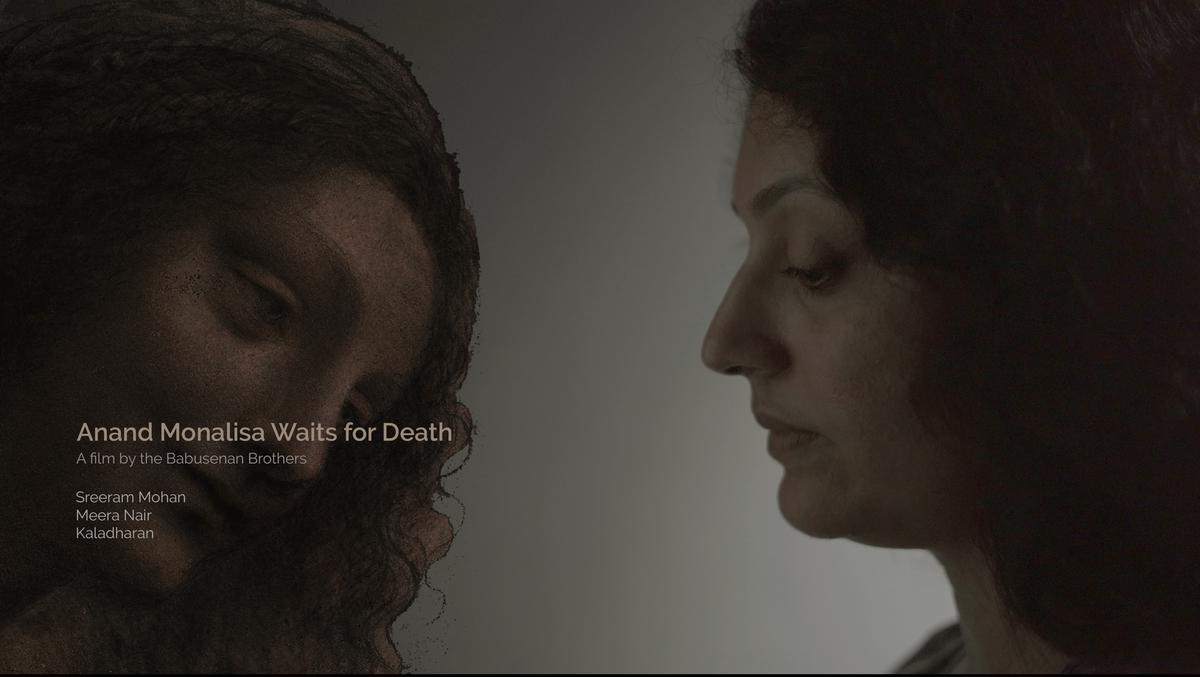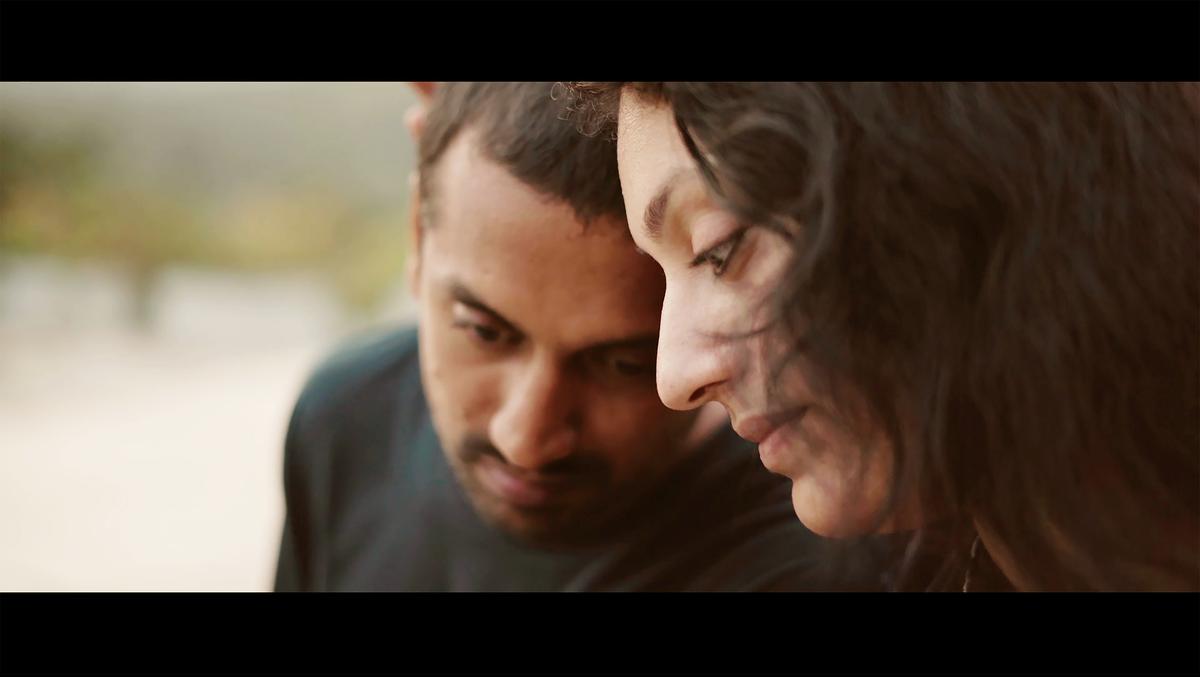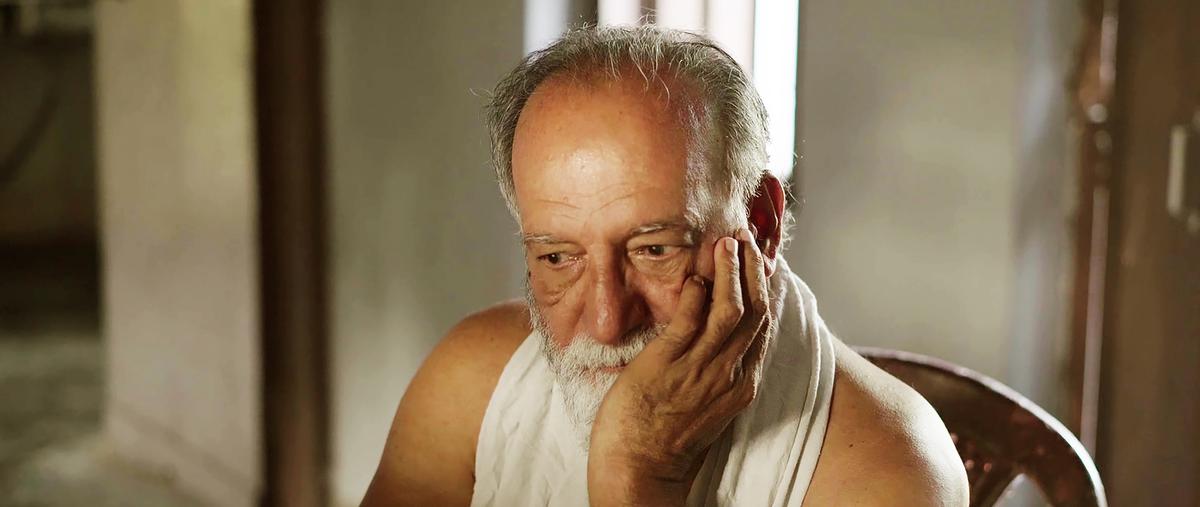Tell us talk about your latest outing, Anand Monalisa Waits For Death….
Satish: Life is full of uncertainties. The only certainty is that we must all die one day, sooner or later. This thought can be scary because it messes with all the plans we make for the future. We build dreams about one’s life, the future of our children and family, or about a million things that we hope will make us happy. Then we hope that these dreams will come true. Across centuries, society has made hope into a virtue. But, in my understanding, it is just the opposite. Hope is fear dressed up as something pretty. It is what we use to escape facing the reality of facts. These are the thoughts that my brother and I decided to explore in our new movie, a story about a young man facing imminent death.
Santosh: We were trying to deal with the human problem of uncertainty. The regular escape route is Hope, but that only adds to the problem. The better option is to keep the mind free of hope and to accept reality, however hard it may seem. This is the thought we wanted to discuss in the film without sounding too pedantic or preachy.

The poster of Anand Monalisa Waits For Death, directed by Satish Babusenan and Santosh Babusenan.
| Photo Credit:
SPECIAL ARRANGEMENT
Your film Ottayal Patha won the Kerala State Film Award for second-best film in 2017. Did that make you happy? Or do you think such recognitions make no difference?
Satish: It was quite a good feeling when the award was announced. It also won our lead actor Kaladharan chettan a Special Jury Award, and Best Actor at the New York Indian Film Festival. Actors and technicians deserve praise when they do a great job. Also, our films get screened at good film festivals. Without those screenings, who would see their hard work?
But, for us personally, recognition doesn’t mean much. There was a time when appreciation mattered. Experience has taught us that cheering and booing are easily interchangeable and have little to do with the quality of one’s work.
Santosh: Awards certainly make us happy. But we try not to let that blind us to the immensity of the task we have set before us. We are in pursuit of quality — mainly artistic — and we know we’re still far away from that thinly populated stratosphere where it’s really hard to breathe. We’re truly glad that over the years we’ve accumulated a bunch of actors and crew who share that vision with us.
Maybe you make films for yourselves, but isn’t a film a product that has to be marketed?
Satish: Indeed, a film needs a market, it needs to earn its upkeep. People who slog on it need to be paid. Our films are not made for entertainment.
Consequently, they can only be thrown into the arthouse market. That market has its requirements too. The world over, it is issue-based art that succeeds there. If you look at the films from India which make it to these major markets abroad, they are all about issues that Indians face — gender, inequality, corruption, infanticide… There are good filmmakers who make films on these themes. However, such themes don’t excite us.
We were always drawn to filmmaking as a medium to express the struggles of the human mind. We loved the work of Tarkovsky, Bergman, Kabirdas, Rumi, Camus… Is there a market for work that gravitates towards the same concerns? Maybe. Or, maybe not. But, in the end, one still has to do what one really enjoys doing.
Santosh: We don’t make films for ourselves at all. Our films are attempts to strike up a conversation with viewers who share our kind of interests. The numbers are few, but we think there are enough to keep us going! We believe these are issues that most human beings will have to grapple with at some point in their lives.
You ventured into movies by producing a commercial film. What did that experience teach you?
Satish: We went in there at a time when we looked at cinema as a business opportunity, dealing with a product which we kind of understood: filmmaking. All five of the partners in our production company were experienced in the media business. We made that expensive product in the best way we knew (it was directed by someone else) but that was the time when viewer habits were changing in Kerala. It was a decent product in a good market at the wrong time. It is still doing well on YouTube. However, at that time, we lost nearly all the money we had. At the post-mortem table, we decided on the new direction to take. And that’s what we’ve been doing ever since. Just completed our ninth feature. So, in retrospect, let’s say we spent a lot of money to learn what kind of movies never to make.
Santosh: Yes, it was a learning experience. But for that first film we may never have turned to directing movies at all. As youngsters we certainly wanted to direct films, but that sort of evaporated somewhere along the way. I am glad we produced that first film because that turned us back to our childhood passion, filmmaking.

Sreeram and Meera Nair in a still from Anand Monalisa Waits For Death, directed by the Babusenan brothers.
| Photo Credit:
SPECIAL ARRANGEMENT
Your films do not have many mainstream actors. Is that a deliberate choice?
Satish: Yes. For one, we wouldn’t be able to afford them. We are very happy working with a small team, our troupe of wonderful actors. I am talking about actors who share the same commitment to cinema as we do.
Santosh: And also the ease of working. All our actors know what we want and they deliver it so easily and so well. We don’t believe in telling actors what to do. We want them to vibe with the script and deliver the action spontaneously. This requires them to spend time with the script, and the rest of the actors and crew. We think good performances are also the effect of a synergy on the set.
We see actor Kaladharan in most of your films; do you build your stories with him in mind?

Kaladharan in a stills from Anand Monalisa Waits For Death, directed by the Babusenan brothers
| Photo Credit:
SPECIAL ARRANGEMENT
Satish: Kaladharan chettan is a wonderful actor, but he is not the only one we repeat. Our troupe includes Sreeram Mohan, Nina Chakraborty and a few other actors too. Sometimes, we come across performers who impress us with their simplicity and their commitment. The troupe automatically includes them.
When we decide to explore a certain idea in a new project, we wonder what cloth to create as a story. The material, the warp, the weft, the spaces, the glue, the gilt…these are the characters. We then assign each character to each actor of our troupe.
Santosh: Sometimes we strike on an actor we have seen in another movie and think can deliver what we have in mind.
Do you think your films have improved over time? If so, in what ways?
Satish: Frankly, yes. We have learnt to handle metaphors a little better. We’ve grown to ease out of the creative process a little more, allowing larger, unknowable forces to take over the making of our films. One interesting thing I’ve been able to observe is that while our films have become more personal in their content and form, our sense of ownership over them has been significantly lessening. That is a pretty rewarding thing in itself.
Santosh: As our films become more personal, they’re paradoxically becoming more beyond our little selves. To us, they seem to originate from somewhere beyond us and engage with more objective and humanistic concerns. ‘Personal’ may not be the right word. Our concerns, and thus our films, are becoming more psychological and existential. As a result, we’re also losing viewers. But I think that’s fine because we are now able to engage with a smaller but more intense and like-minded group of viewers.
Does sibling rivalry surface once in a while?
Satish: We have one rule. If one of us thinks that an idea put forth by the other is unacceptable, we drop that idea immediately without trying to defend it. As for sibling rivalry…no.
Santosh: No rivalries, at all. Guess we have greyed too much for that sort of thing. We have our differences, but we always find common ground.
What are your future projects?
Satish: We are talking about uncertainty here. What do we know what life has in store for any of us in the coming days, months, or years? From past evidence, we can assume that there could be more films. But I have no idea how they will turn out.
Santosh: We would rather take things as they come. But films are never far from our minds. We have already discussed three or four ideas and discarded all of them. What’ll stick we have no idea! We take it slow and lazy.
Stay connected with us on social media platform for instant update click here to join our Twitter, & Facebook
We are now on Telegram. Click here to join our channel (@TechiUpdate) and stay updated with the latest Technology headlines.
For all the latest Entertainment News Click Here
For the latest news and updates, follow us on Google News.
